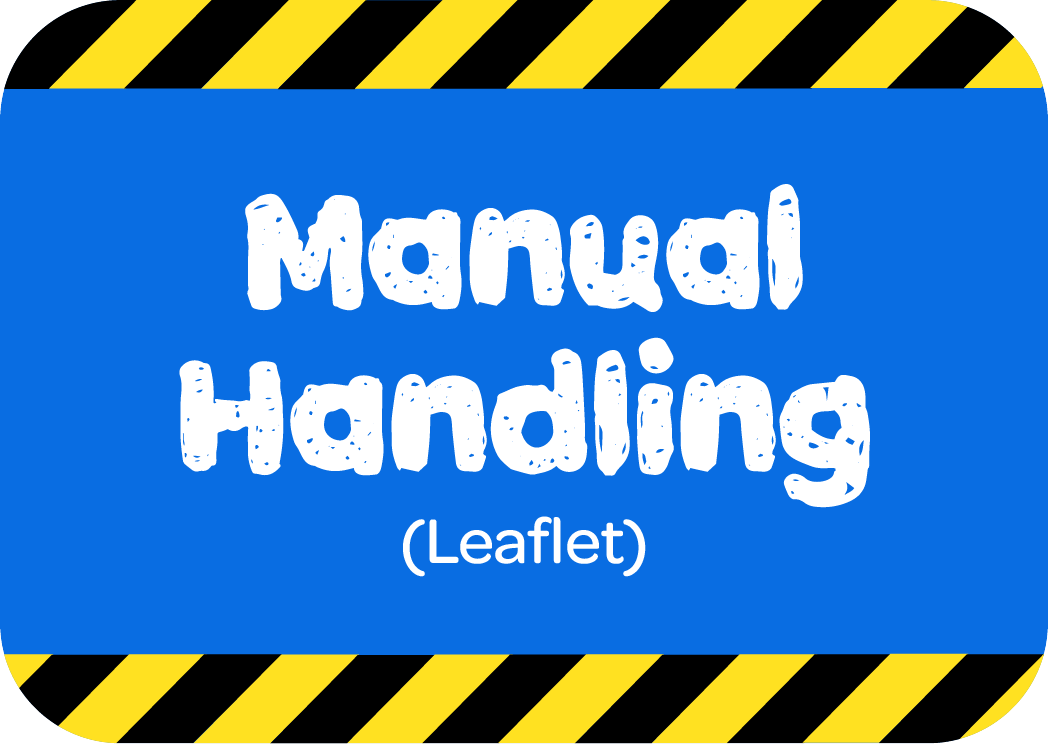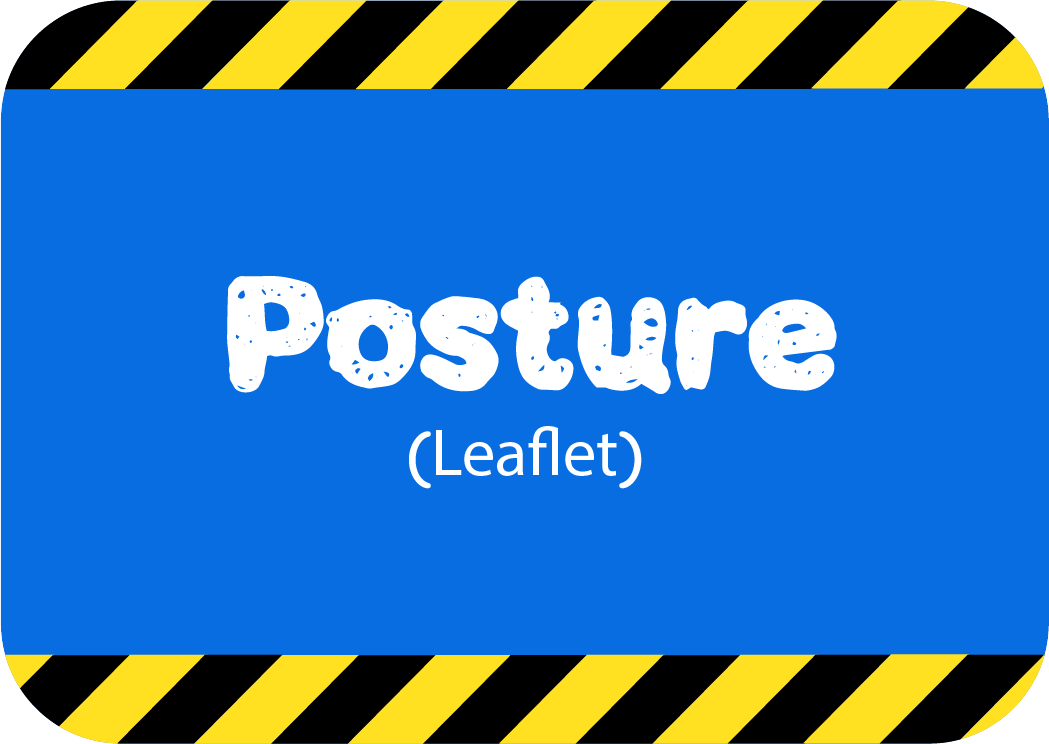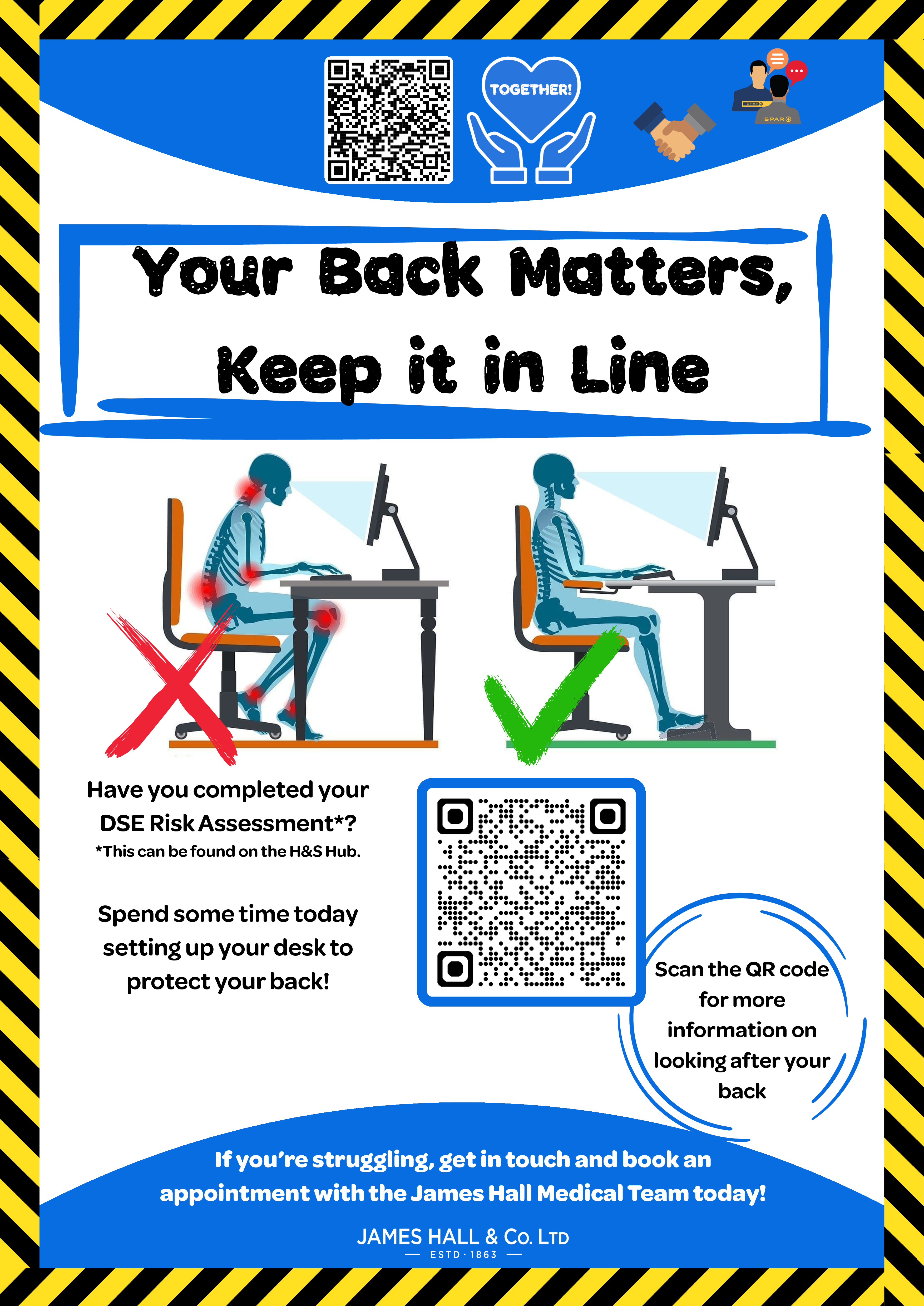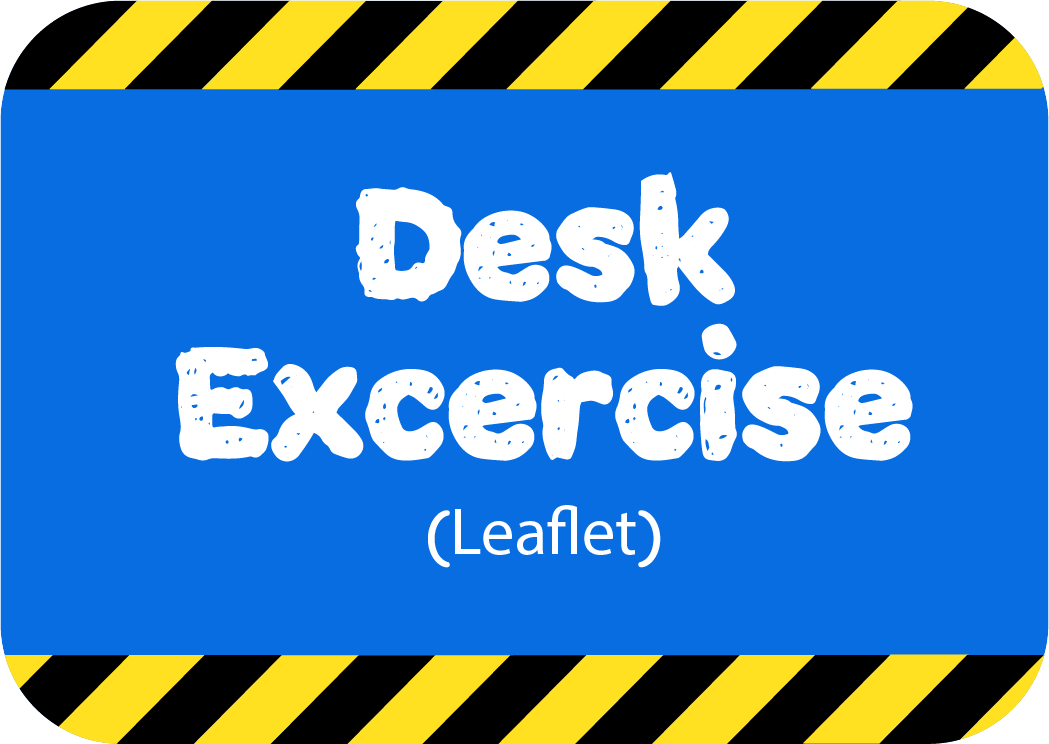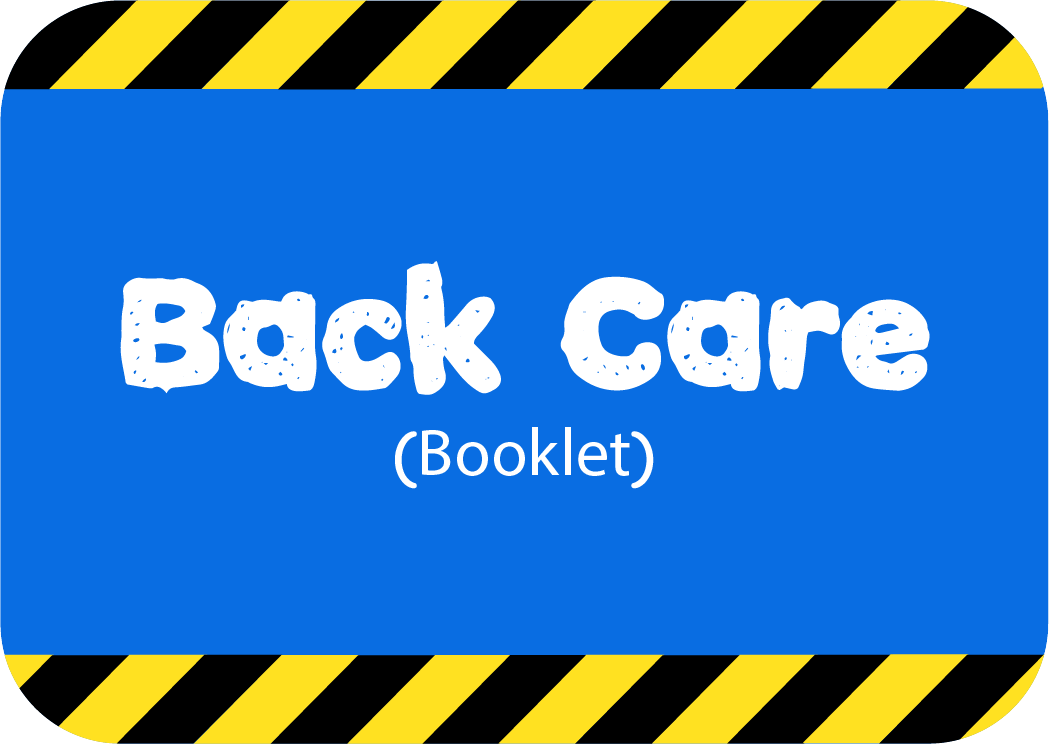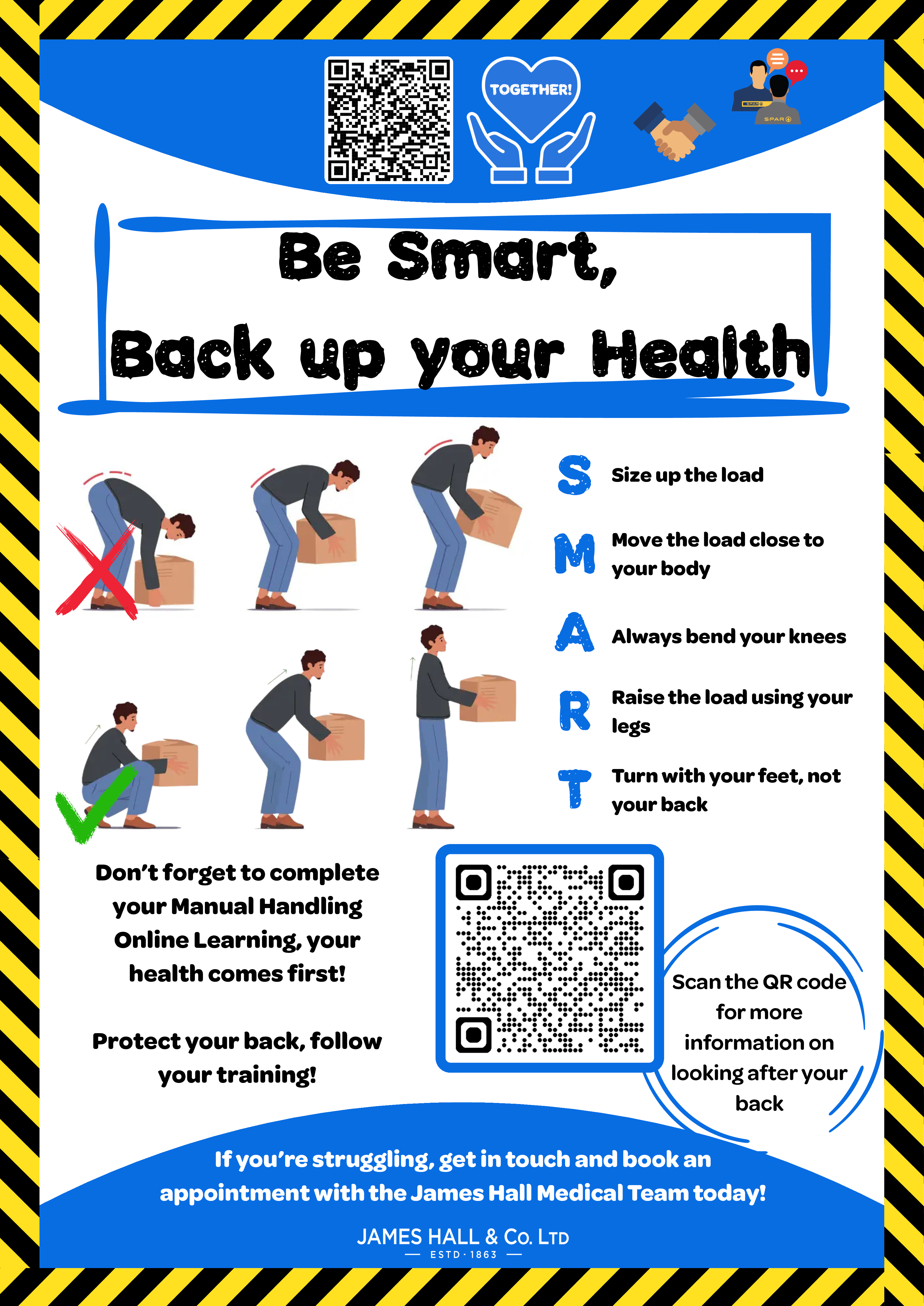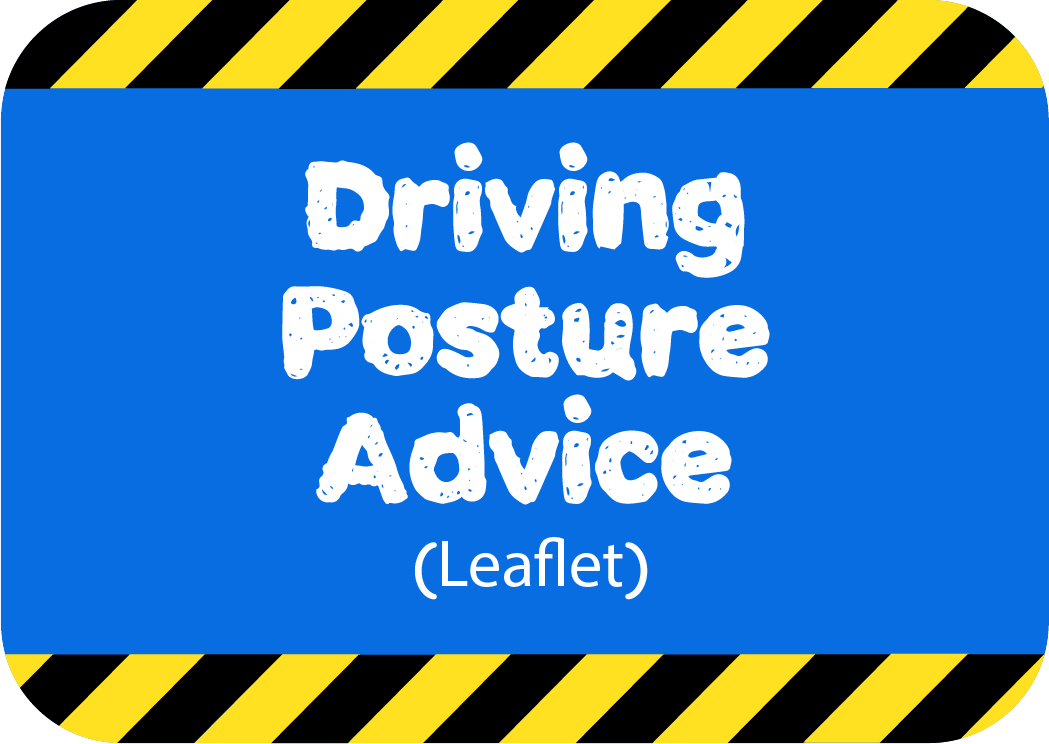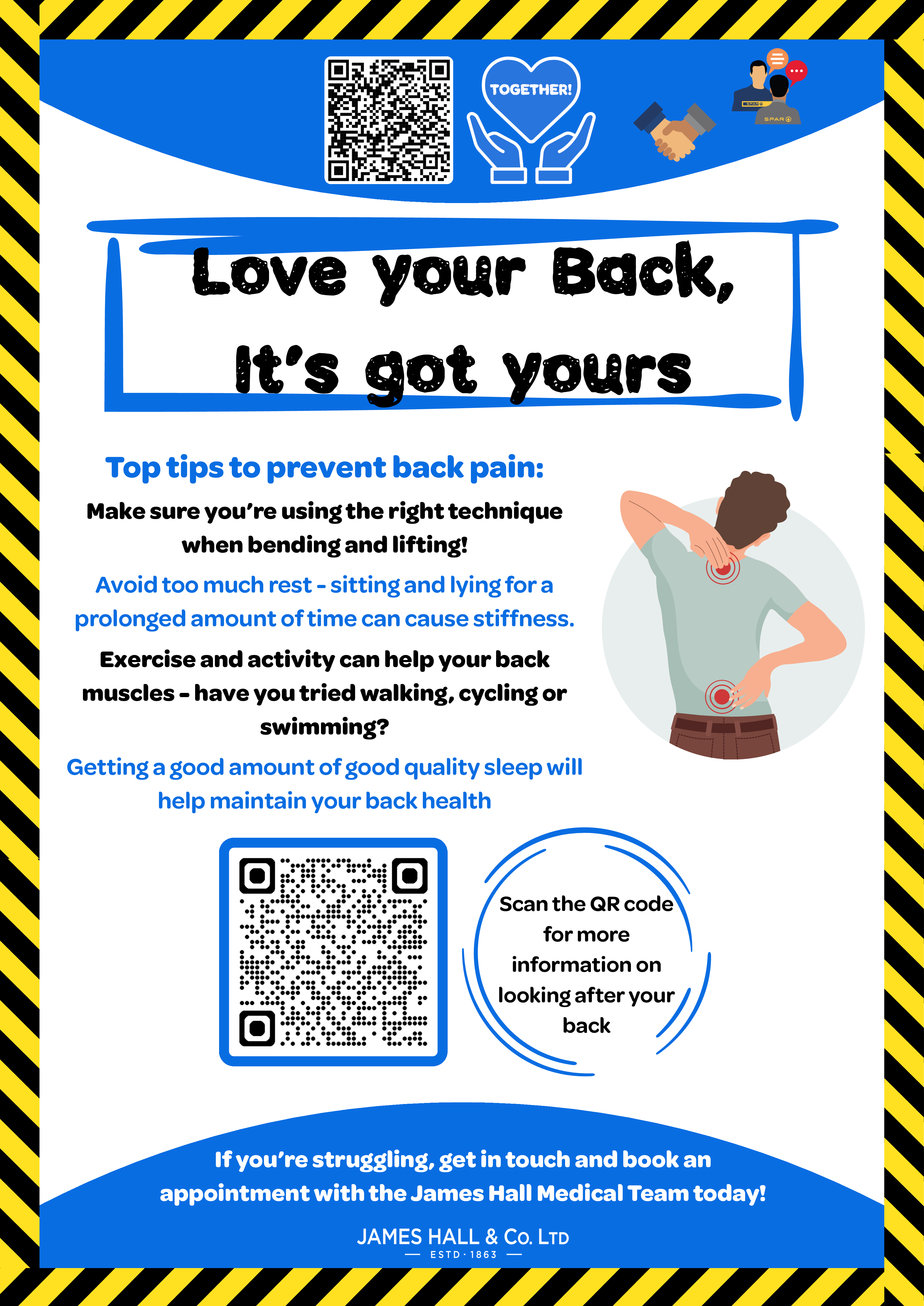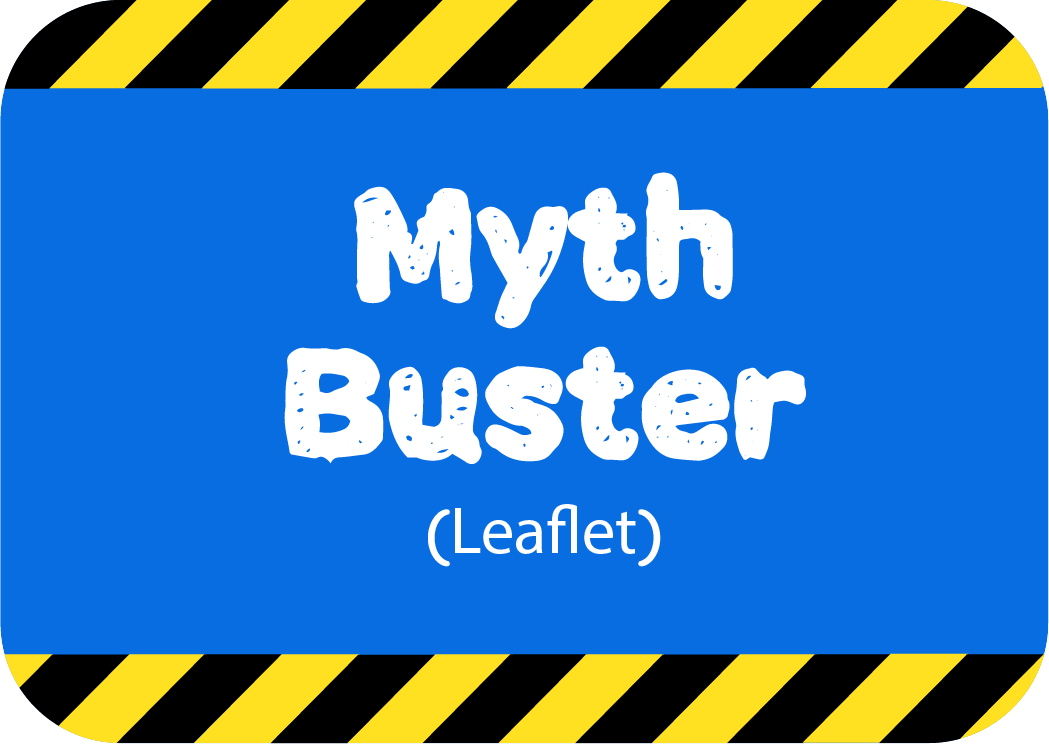
Why is Back Health important?
Back pain is the world leading cause of disability and affects 80% of the population at some point in their lives. It is accountable for more than 12 million lost workdays each year in the UK alone.
Injuries behind back pain are often avoidable. Back care awareness is important to us all, regardless of age or our role.
Take some time out to learn more about your spine and how you can sit, stand lift or carry things including bags and boxes. Think about how you can incorporate exercise and a healthy diet and lifestyle as part of your routine.
Office / Desk Information
Whilst posture is important when sitting, lifting and carrying, it is equally important to keep moving regularly to help maintain joint and muscle health. Find further information regarding sitting postures on our Back Health leaflet at the bottom of this page!
As a James Hall & Co Ltd employee, you may be required to complete the Online Learning Module for Display Screen Equipment when you begin employment if you work in an Office Based Role.
Following completion of the online learning, you should access the James Hall Display Screen Equipment Risk Assessment here and complete for your workstation. If you are unsure of how to access any of the above, please speak to your Line Manager or Health & Safety Officer.
Manual Handling / Back Health at Work
Being active in work is a great way to improve your overall health. Jobs that involve regular lifting, bending stretching and pushing helps you develop strong powerful muscles. However, if approached incorrectly they can contribute to back pain, joint injuries, muscular aches and pains.
Find further information regarding sitting postures on our Manual Handling leaflet at the bottom of this page! As part of your role, you may be required to complete the Manual Handling Module on the Online Learning Platform. You may also be asked to read and understand the Manual Handling Risk Assessment.
If you are unsure of how to access any of the above, please speak to your Line Manager or Health & Safety Officer.
Tech Neck
More often now we use technology to make our lives ‘easier’ or for communication and leisure time. Our head is the heaviest part of our body.
Looking down for prolonged amount of time can put us at risk of developing neck pain and other problems.


